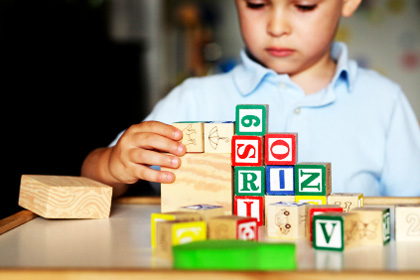 Parents are their children’s first teachers. We help them learn their first words, take their first steps and ride their first bike. We cheer our children on and celebrate their triumphs as we watch them learn and grow. We can also be the first to notice a problem with their learning.
Parents are their children’s first teachers. We help them learn their first words, take their first steps and ride their first bike. We cheer our children on and celebrate their triumphs as we watch them learn and grow. We can also be the first to notice a problem with their learning.
When children are introduced to a classroom environment and start to learn the basics of education, some fall behind their peers. If a child is struggling with a skill in school and practice does not produce improvement, it may be time to consider the possibility that the child has a learning disability.
“Children with learning disabilities have normal intelligence, but show a discrepancy between their academic potential and their academic achievement,” says Elizabeth Smith, Ph.D., a learning disability specialist at Kinderminds in Bellevue. These students often exhibit difficulties in the areas of reading, writing or math, she says.
“Some kids’ brains are simply wired differently, and these differences affect how they process the information they receive,” says Owen Judson Bargreen, Psy.D., an Everett psychologist who tests children for learning disabilities. This difference in the way the brain works can cause kids with learning disabilities to have uneven areas of ability.
The learning disability can show up as a weakness within a sea of strengths. For example, a child with dyslexia may struggle with reading, but can excel in math and science.
It’s common for kids with learning disabilities to avoid activities connected to their weakness, such as reading for enjoyment or using math to keep score of a game. “Kids will always gravitate to what they are good at, and they will avoid the things that do not come easily,” says Smith.
Smith advises parents to watch for other “red flags” in children of preschool or kindergarten age. “If your child is not coloring; does not understand rhymes like [those of ] Dr. Seuss; can’t discriminate between a big “B” and a little “b” or a big cow and a little cow; or if you have alphabet magnets on the refrigerator, and they can’t name the letters when you ask them what they are called — these are all warning signs that your child may need to be tested,” she says.
Learning disability testing basics
All students are guaranteed “free and appropriate public education,” as mandated by the U.S. Department of Education. School districts must offer kids with learning disabilities special accommodations and services that may include a written individualized education program (IEP), which outlines services and goals for the year. Some students might need extra time to complete tests; others might need help with taking notes or one-on-one tutoring.
To identify learning disabilities that qualify students for these kinds of services, parents can consider several testing options. Some doctors and psychologists specialize in testing children with learning disabilities. But not all insurance companies will pay for the testing, which can cost from $1,500 to $2,000. “In the end, you will receive a full report on your child’s diagnosis and a detailed plan for parents and teachers outlining strategies that will help the child have more success in school,” says Bargreen.
Children enrolled in the Head Start program are eligible for free testing. “Head Start thoroughly screens preschool-age children for all disabilities and offers families support that empowers parents so they can learn to work together with the public school system,” says Joel Ryan, executive director for the Washington State Association of Head Start & Early Childhood Education and Assistance Program.
Parents can also request a screening at their child’s school through the federal Child Find program, which requires schools to locate students who qualify for special education services. The Child Find program takes referrals from parents, doctors or teachers who think a child may have a disability.
Doreen Milburn, a preschool program specialist at the Lake Washington School District, works with the Child Find program. “Usually what we see in kids at this age is a delay in speech, in cognitive issues or in fine motor skills,” she says.
Intervene early
When a learning problem is suspected, experts encourage testing kids early. With early diagnosis and intervention, a child is less likely to fall too far behind her peers before receiving help. When kids fall behind, they run the risk of secondary problems with behavior, such as acting out or becoming the class clown, says Smith.
Some kids who lag behind significantly may need to be treated later for anxiety and depression, she says. “When they start to think they’re not smart, and they begin to lose hope of ever being better, it’s very sad,” she says. Instead of liking school, they can begin to loathe certain subjects.
Seeking help for a learning disability early can help deter that. Smith advises parents to become informed, request assessments, ask for IEP programs in school, set up a plan for homework and seek support at local parent support groups.
Katie Amodei is a Lynnwood-based freelance writer and mother of two.
Resources for Children with Learning Disabilities
Learning Disabilities Association of America
Learning Disabilities Association of Washington
Referrals for local specialists and tutors
Locate a Head Start program









